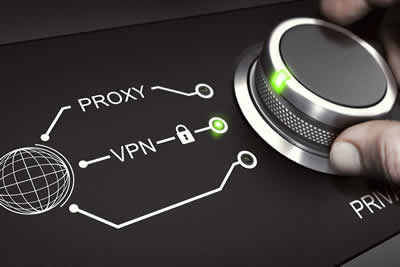RMM stands for remote monitoring and management, and RMM software enables businesses and IT teams to look after networks, devices, and systems remotely.
Many businesses are increasing the use of remote working as part of a drive to grow their operations. And whether you're a small IT team or running a large-scale
Managed Service Provider (MSP in the jargon), selecting the right RMM tools is essential for this to happen.

In this article, we'll explore the features of RMM software, how its tools support business development and how IT managers can use these tools for success.
How RMM Software Supports Business Development
The use of RMM software to monitor and manage devices provides a number of benefits for business development:
1. Scalability
It helps to automate IT management tasks like patch management, supervising activity and troubleshooting. This helps IT teams to focus on driving the business rather than carrying out admin tasks. For example, an IT manager can oversee a large number of devices from one single dashboard.
2. Customer satisfaction
Customer satisfaction is absolutely vital for sustainable business growth. Isn't it easier to add new customers to a solid base, rather than be weighed down by the need to replace people who have gone elsewhere? RMM solutions help MSPs to deliver the right services with fewer issues for clients. What's more, with analytics and automated alerts, IT teams are able to address a lot of problems before they occur. Needless to say, this shields customers from even being aware of problems, which creates trust and (inevitably) loyalty.

3. Cost savings
No-one can develop a business without cost-effective solutions. RMM tools help to reduce costs by reducing the need for site visits. And this means that savings can be reinvested into growth-focused activities.
Key Features to Look Out For
Making the right choice can be a real challenge! But by looking into the features available, it's possible to assess whether they match what's required, and get the best
RMM software for a business.
Here are some features to consider:
- Reporting: You need reports to monitor devices and networks so that issues can be resolved. The right package will provide the kind of reports that enable targeted decision-making.
- Automation: Any modern business needs to use technology to reduce repetitive tasks and enable updates and backups wherever it can. This doesn't just save costs, but also lets IT teams focus on higher-value projects.
- Scalability: As businesses grow, IT teams need to evolve. For this reason, any RMM package should be scalable in a way that matches the changing needs of the business.
- Security: Don't forget that data protection and compliance regulations are big, but often hidden, priorities. It's all too easy to get carried away with the prospect of new features and cost savings, but if data isn't secure, there's a big problem waiting to blow up down the line. So you need to check that security features such as encryption, multi-factor authentication (MFA) and compliance reporting are included.
- Integration: Reliable features of integration, such as CRM systems and helpdesks, as well as reliable office software, will improve workflow.
As you can see, there's lots to consider. But by following what we say above, and relating the points to the needs of the business, you'll be able to find the most effective system.

Real-World Applications: RMM in IT Management
An unavoidable part of
IT management is the need for continual development. And this often involves a whole host of changes, which RMM solutions are perfectly positioned to manage.
Let's look at three real-world applications of how RMM tools can help:
1. Small and medium-sized enterprises (SMEs)
SMEs often lack the resources they need, and their inability to manage operations as fully as they'd like is often a real problem. With RMM tools, they're able to monitor and manage operations remotely so there's a reduced risk of downtime and – obviously – higher levels of productivity.
2. Managed service providers (MSPs)
For MSPs, getting the right IT services is essential for growth. RMM tools help them to monitor client systems, deliver work on time and improve their operations.
3. Large businesses
Large businesses have their own specialized IT departments looking after complex systems at multiple locations. With the use of RMM software, they're able to manage remotely from – often – a single location.
The Future of RMM Software
IT management will, in the future, increasingly need to
work closely with RMM software. And with the increase in artificial intelligence (AI), businesses can use AI-driven tools to help with – and often replace – functions that monitor failures, automate processes and report on operations.

And of course, due to the increase in remote working, remote IT systems play a growing role within businesses that manage international teams.
What To Do Next?
We hope you'll agree that RMM software, when integrated with IT management systems, can be a real game-changer for businesses. These tools can combine to reduce costs, enhance services and improve productivity. And whether you're an IT specialist or company owner, selecting the right RMM tool is essential for growth and long term success.
If you don't use RMM tools to support your operation, take a look at it. Re-read what we've said here, and think about whether the features listed will provide real benefits for you. It could be the way to take your business to the next level…




























